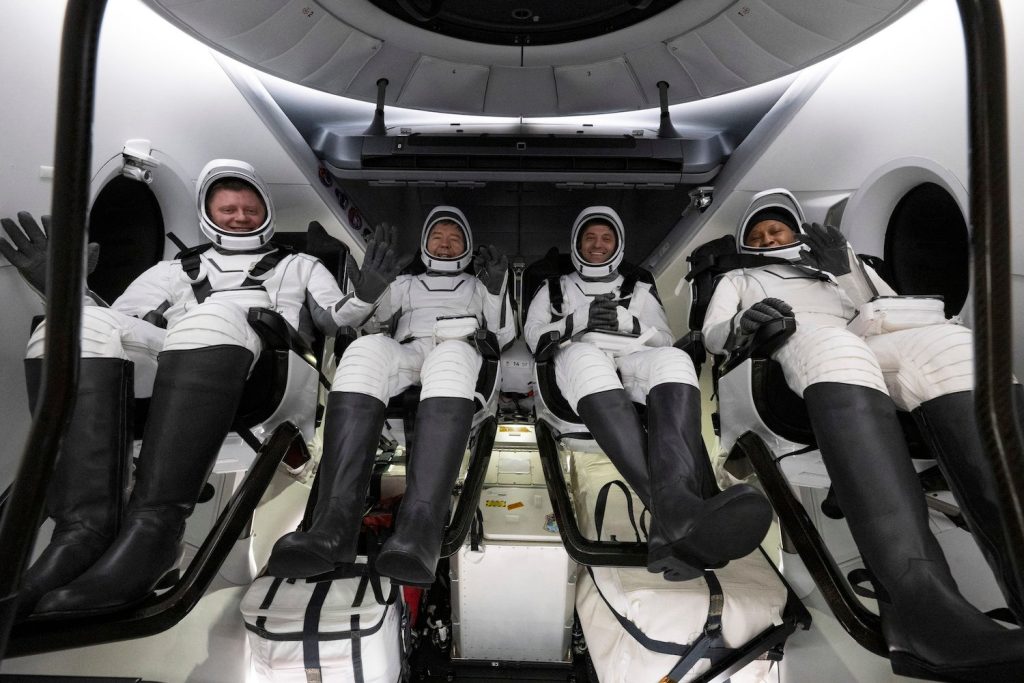All four Crew-8 astronauts underwent medical evaluations at a Florida hospital Florida after returning from space on board a SpaceX Crew Dragon, and one astronaut was forced to stay overnight due to an unspecified medical issue.
NASA’s SpaceX Crew-8 mission splashed down at 3:29 a.m. ET on Friday off Pensacola, Florida, following a nearly eight-month-long stay on board the International Space Station (ISS). The crew returned to Earth on board a SpaceX Dragon spacecraft which “executed a normal entry and splashdown,” according to NASA. Rather than heading to NASA’s Johnson Space Center in Houston, however, the four-person crew were flown together to Ascension Sacred Heart Pensacola hospital in Florida to undergo medical tests.
“The crew exited the Dragon spacecraft onto a recovery ship for standard post-flight medical evaluations,” NASA wrote in a blog update. “Out of an abundance of caution, all crew members were flown to the facility together.” Three of the crew members departed the hospital while one unnamed astronaut stayed behind for an overnight stay, presumably due to a medical issue. The identity and specifics of the astronaut’s condition were not shared by NASA to protect their privacy.
Hospital officials released the astronaut the following day, allowing a return to the Johnson Space Center to resume regular post-flight reconditioning with other crew members. NASA confirmed that the astronaut was in “good health.” It’s still not clear whether the medical issue was brought on by the stay in orbit or the trip back to Earth, or perhaps something unrelated to their time in space. However, the fact that all four crew members were taken to the hospital for additional medical evaluations seems to suggest that the medical issue was somehow related to the journey back to Earth.
Crew-8 included NASA astronauts Matthew Dominick, Michael Barratt, and Jeanette Epps, as well as Roscosmos cosmonaut Alexander Grebenkin. The four astronauts spent a total of 232 days on board the ISS, traveling nearly 100 million miles and completing 3,760 orbits around Earth while conducting scientific research, according to NASA.
NASA’s Crew-8 launched to the ISS on March 4, but their return to Earth had been delayed for several weeks because of hurricane Milton, forcing the space agency to forgo an undocking attempt on October 7. The crew was originally scheduled to return in mid-August but NASA extended the mission to keep the Dragon spacecraft docked to the ISS for Starliner’s stranded astronauts in case of an emergency.
Boeing’s spacecraft launched astronauts Butch Wilmore and Suni Williams in June, but an empty Starliner returned to Earth in September, leaving its crew behind after it was deemed unfit to return the astronauts to Earth. In the event of an emergency on the ISS, the two astronauts would have needed the extra room on the Dragon spacecraft to shelter in place.
The delays to the crew’s return caused the astronauts to spend nearly eight months in space rather than the original mission timeline of six months. Space is a harsh environment that takes its toll on the human body, affecting bone and muscle density, vision, and even causing astronauts to become more susceptible to infections on board the ISS. There’s clearly a lot more research that needs to be done on astronaut health and ways to mitigate the harmful effects of space on the human body before astronauts make the long trek to Mars.

